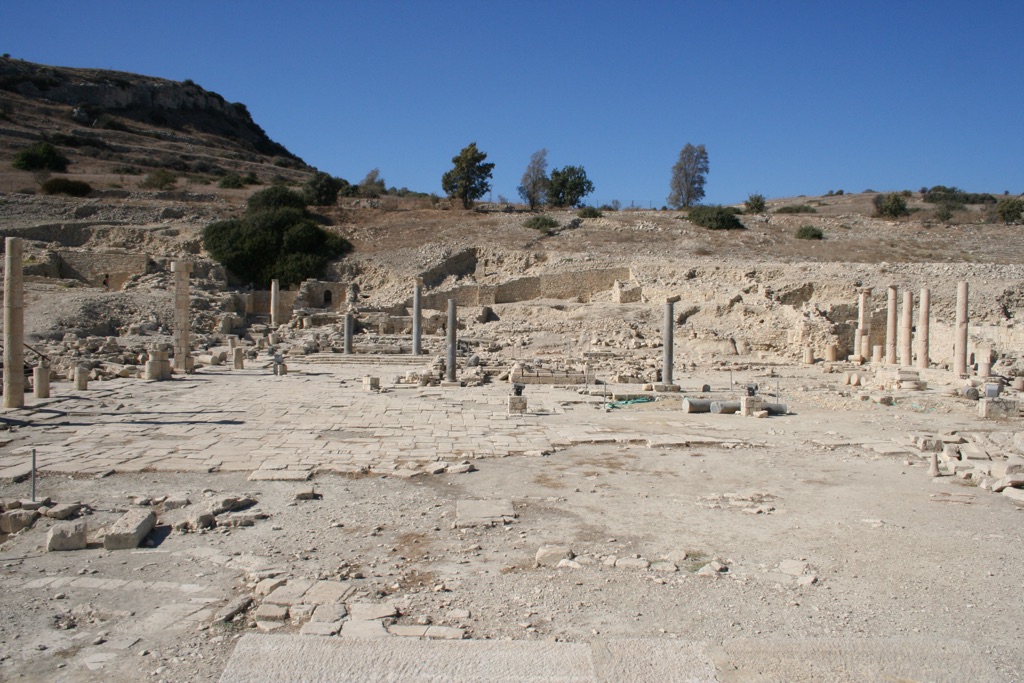The Amathous archaeological site is a captivating historical treasure located on the southern coast of Cyprus. It boasts a rich tapestry of history, having been one of the ancient city-kingdoms of the island. The site reveals layers of civilization, from the Greeks to the Romans, and even evidence of earlier Bronze Age settlements. Amathous is renowned for its impressive ruins, which include the Acropolis, the Agora, and the Temple of Aphrodite, offering invaluable insights into the ancient world.
Get your dose of History via Email
Historical Background of Amathous
Amathous, an ancient city-kingdom, was discovered in the 19th century. Luigi Palma di Cesnola, an American consul, conducted initial excavations. The city was likely founded around 1100 BC by the Eteocypriots. However, Greek settlers heavily influenced its development. Over time, Amathous became a bustling hub of activity and trade. It was also known for its cult of Aphrodite and Adonis.
The city thrived during the Archaic, Classical, and Hellenistic periods. It was eventually conquered by Richard the Lionheart during the Third Crusade. After this, Amathous began to decline, eventually being abandoned in the 7th century AD. Its ruins lay untouched for centuries, preserving a snapshot of its past glory.
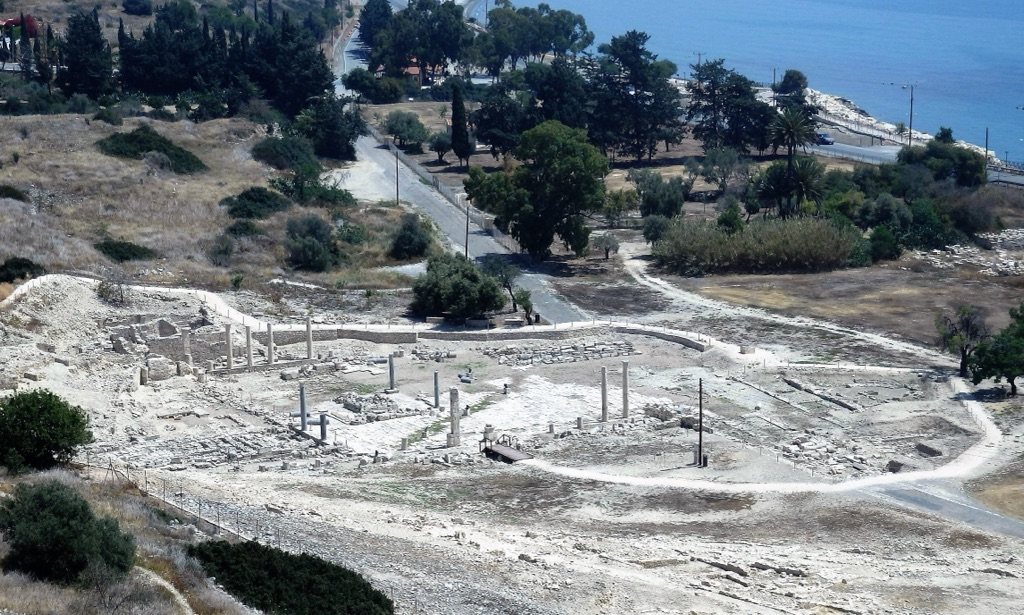
Throughout its history, Amathous was a significant player in regional politics and trade. It minted its own coins, a sign of its economic power. The city also withstood numerous invasions and sieges. Its strategic coastal location made it a desirable conquest for many powers.
Excavations have revealed that Amathous was not just a political center but also a religious one. The Temple of Aphrodite was a pilgrimage site. The city’s necropolis has provided a wealth of information about its inhabitants and their customs.
Amathous has a storied past, marked by prosperity and resilience. It has witnessed the ebb and flow of civilizations, each leaving its mark on the city’s landscape. Today, it stands as a testament to the island’s rich cultural heritage.
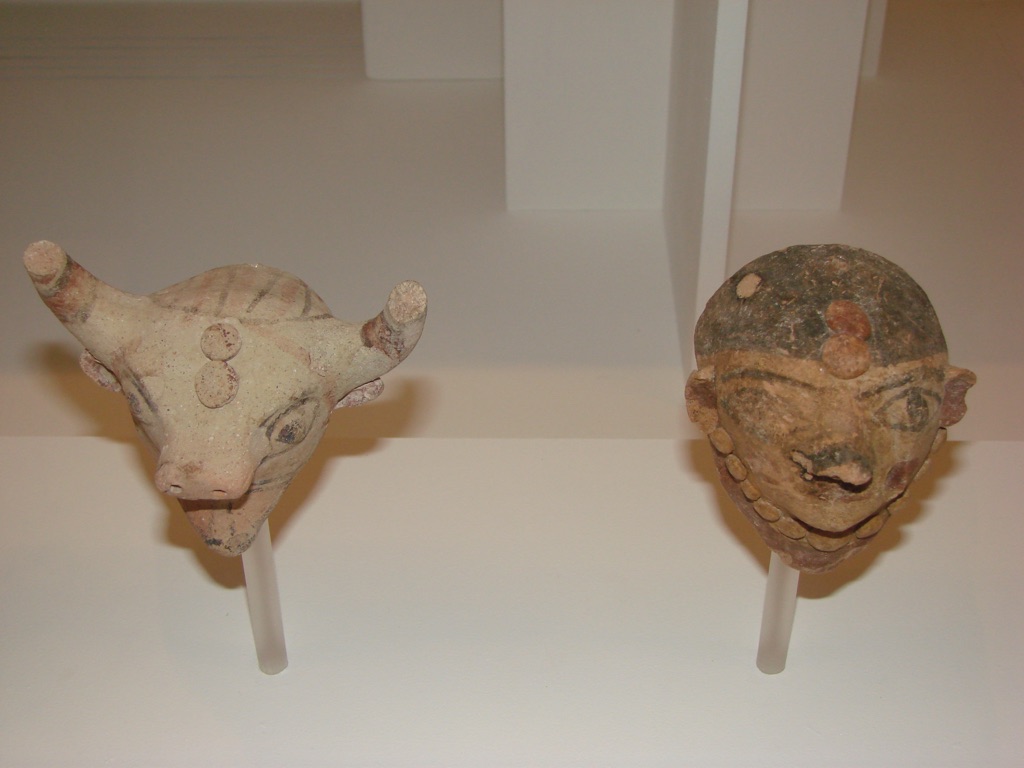
About Amathous
The Amathous archaeological site is a testament to ancient engineering and architecture. The city was built on a hill, overlooking the sea, which provided natural defense and a commanding view. The Acropolis of Amathous is particularly noteworthy, with its massive walls and structures that have stood the test of time.

The Agora, or public square, was the heart of Amathous. It was where citizens gathered for social, political, and economic activities. The remains of the Agora give us a glimpse into the daily life of the ancient Amathians. The site also includes a complex system of aqueducts, highlighting the advanced understanding of water management.
Construction materials for the city’s buildings were primarily local limestone and sandstone. These materials have endured over millennia, allowing archaeologists to study the architectural styles and techniques used. The Temple of Aphrodite, although in ruins, still conveys the grandeur it once had.
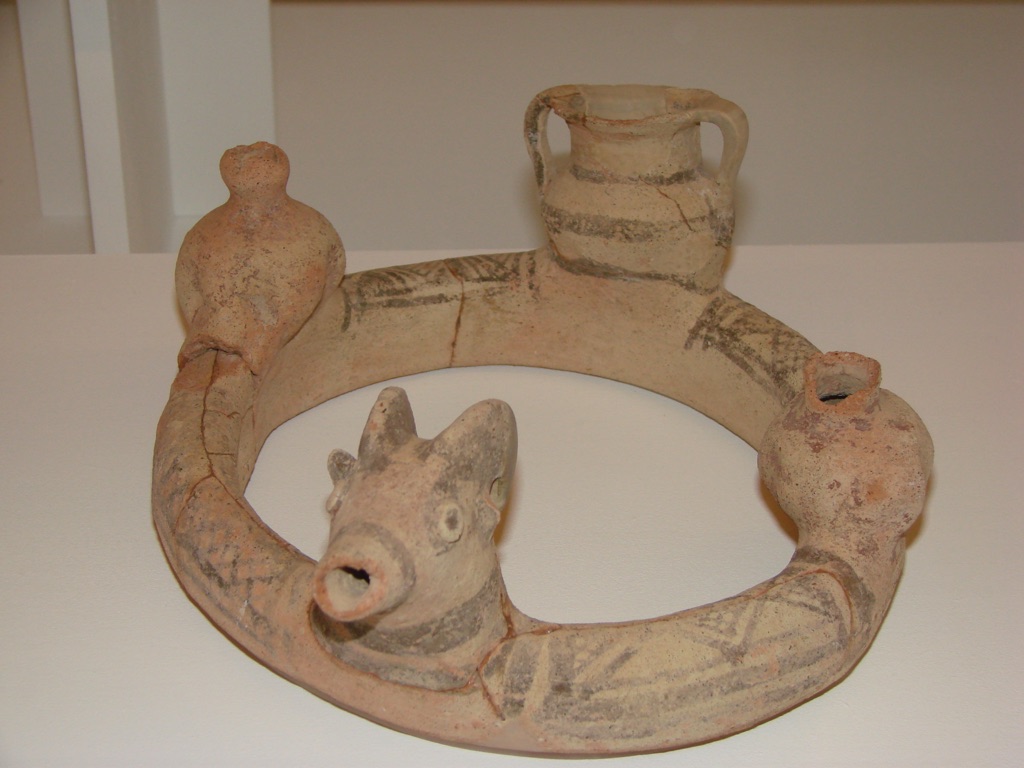
Architectural highlights include the royal palace and the city’s fortifications. The palace’s layout suggests a sophisticated understanding of urban planning and residential comfort. The fortifications, with their towers and gates, illustrate the city’s military significance.
Amathous is a treasure trove for archaeologists and historians. Its ruins provide a window into the architectural prowess of ancient civilizations. They also offer clues about the social and political dynamics of the time.
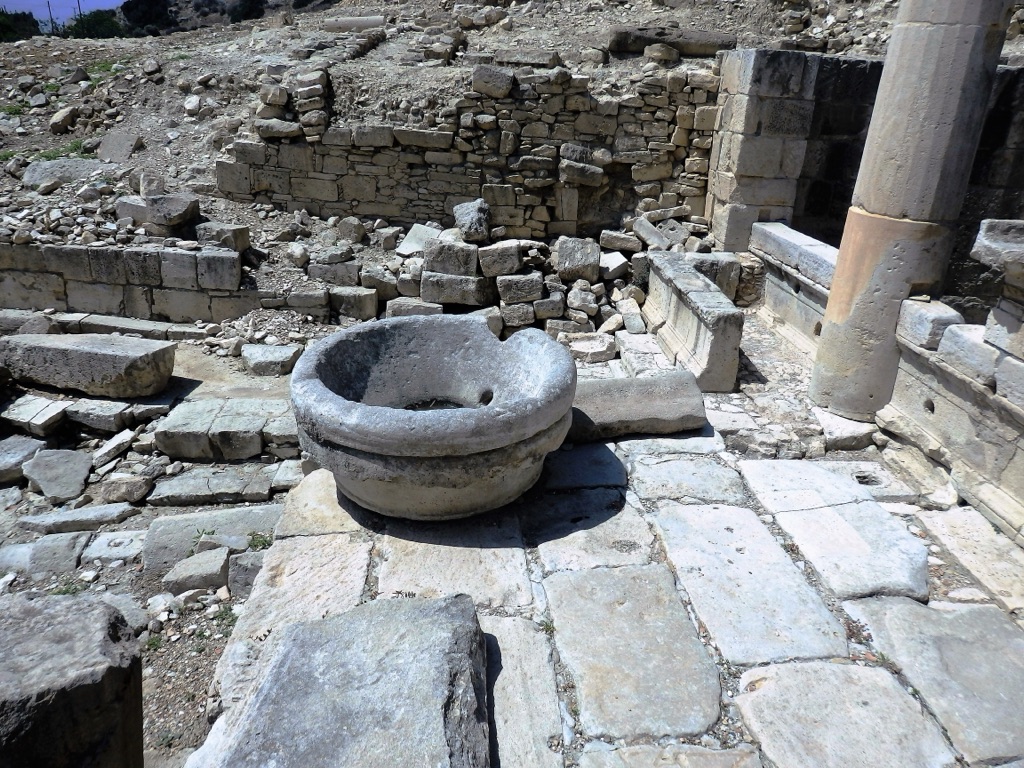
Theories and Interpretations
Amathous has been the subject of various theories and interpretations. Its name is thought to be pre-Greek, suggesting a rich prehistoric origin. The presence of a large stone vessel, the “Amathous Vase,” has led some to speculate about religious rituals that might have taken place here.
The site’s use has been debated among scholars. While it was clearly a city-kingdom, the extent of its influence and the nature of its governance are still being explored. The role of the Temple of Aphrodite in the city’s religious life is also a topic of interest.
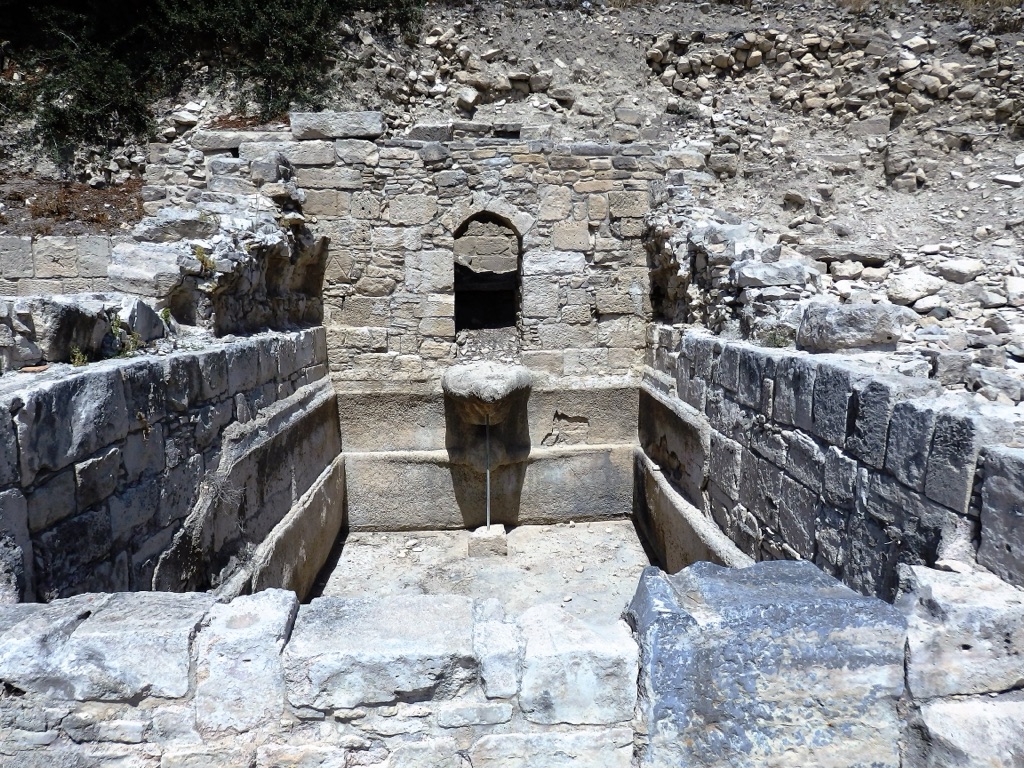
Mysteries surround Amathous, such as the exact reasons for its decline and abandonment. Some suggest it was due to Arab raids, while others point to natural disasters. The truth remains elusive, buried within the layers of history.
Historical records and archaeological findings have been matched to piece together the city’s past. Dating of artifacts and structures has been carried out using methods like stratigraphy and radiocarbon dating, providing a timeline for the city’s development.
The interpretations of Amathous are constantly evolving as new discoveries are made. Each layer unearthed adds to the narrative of this ancient city, offering fresh perspectives on its history and significance.
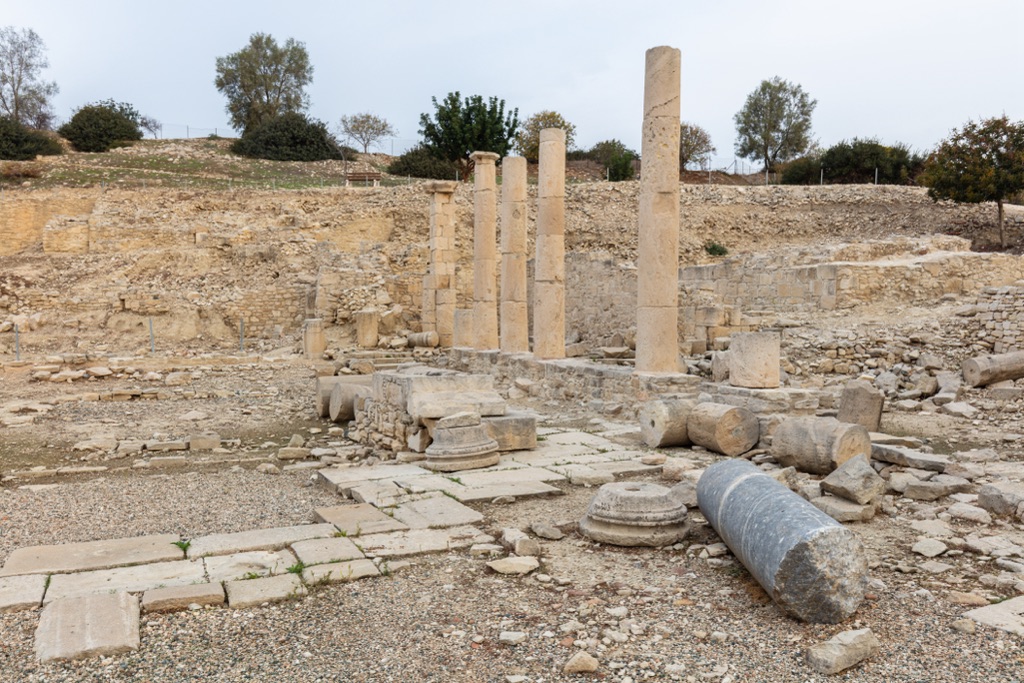
At a glance
Country: Cyprus
Civilization: Eteocypriot, Greek, Roman
Age: Founded around 1100 BC, abandoned in the 7th century AD
Conclusion and Sources
Reputable sources used in the creation of this article:
- Wikipedia: https://en.wikipedia.org/wiki/Amathus

